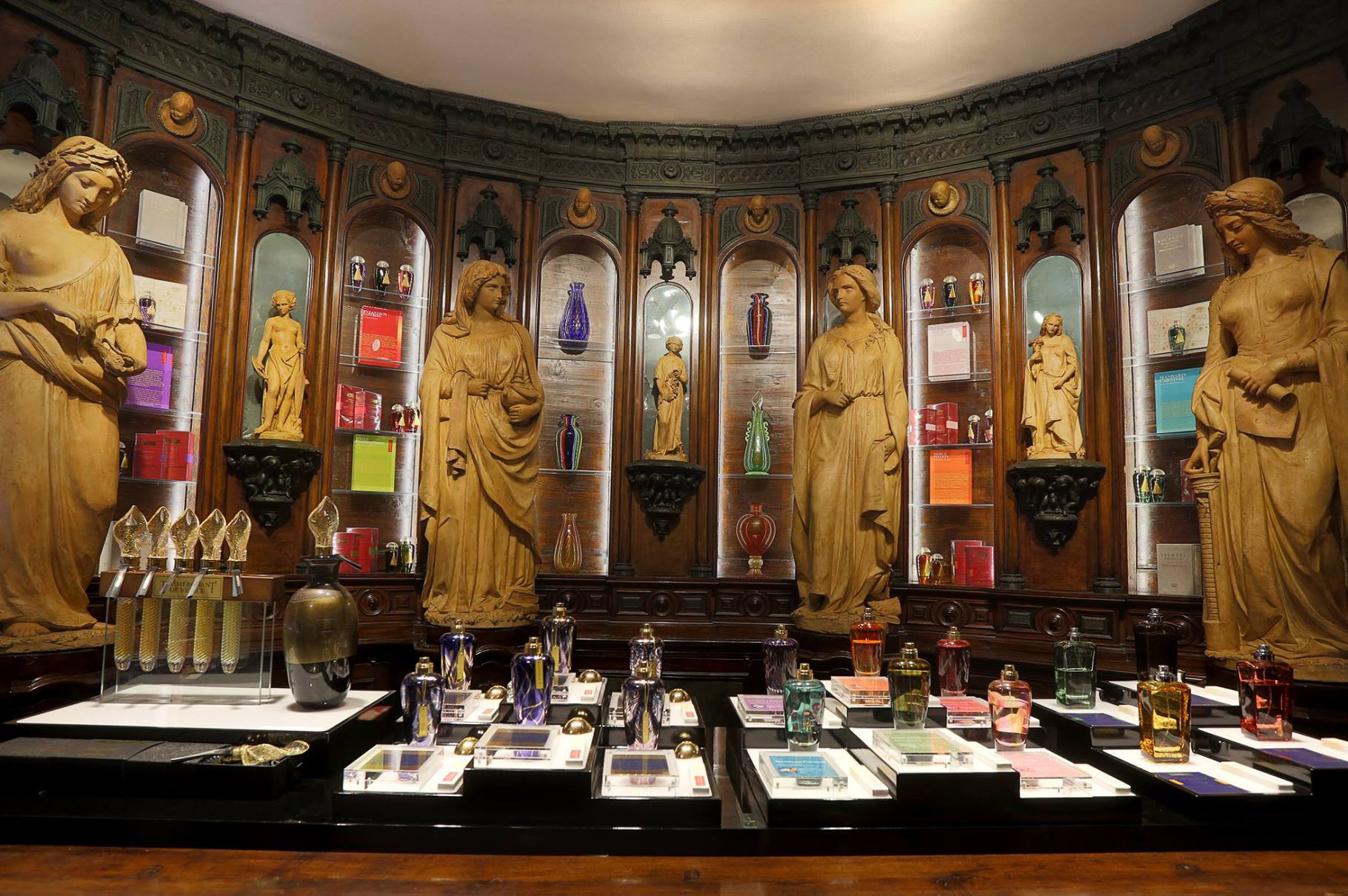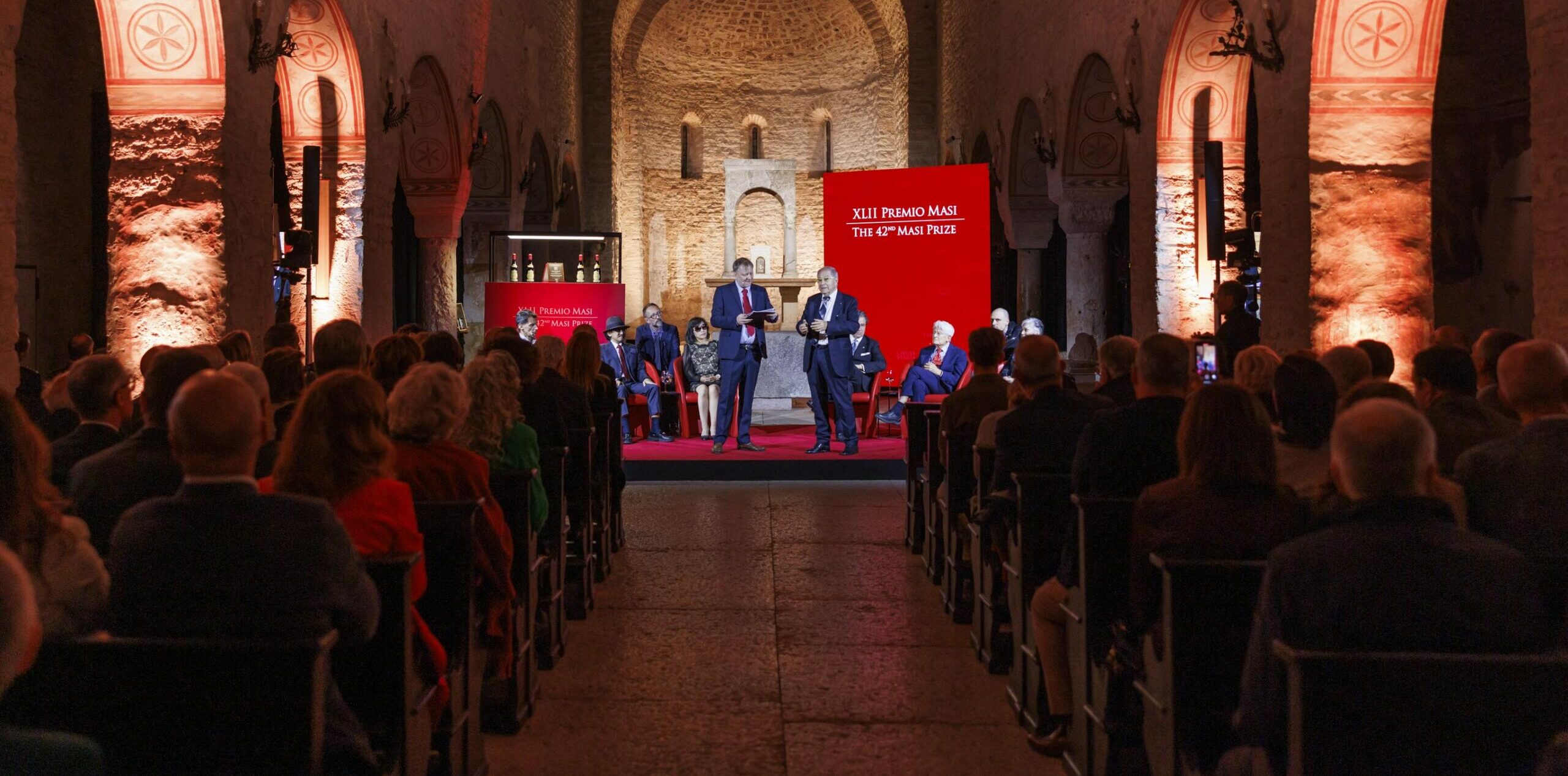by Sonia Sbolzani
“Perfume has a more convincing persuasive force than words, appearance, feelings and willpower” wrote Patrick Süskind in his famous novel ‘Perfume’. The link between perfume and Venice is ancient and real, so much so that Palazzo Mocenigo (the famous museum that houses the Centre for the Study of the History of Textiles and Clothing) has constructed a delightful visitor route dedicated to perfume with no fewer than five exhibition rooms, one of which is a reproduction of the Renaissance workshop of a muschiere (or “musk man” as the perfumer was called, because his ingredients included costly animal musk extracted from the glands of a small deer).
The perfumery history of the Serenissima, whose trading patterns always included Oriental and Byzantine cosmetics, is thousands of years old and quite fascinating. Through the system of the mude – naval caravans that were periodically organised to transport goods between East and West – Venice rapidly became the capital of essences. New production techniques, such as diluting oily substances in aqua-vitae to make them vaporisable, led to a commercial evolution of the market to the point that Venetian perfumes went on to conquer all the courts of Europe. The publication of ‘Secreti nobilissimi dell’arte profumatoria’ in 1555 saw the advent of Giovanventura Rosetti’s famous book with more than 300 recipes for beauty products, including soaps, perfumed waters for the home and powders. This book, which is the first western catalogue-style publication to be compiled with a scientific approach, has always been the property of the Vidal family (of ‘Pino Silvestre’ fame), whose company Mavive also works in partnership with the Venetian Civic Museums Foundation.
On the piano nobile of Palazzo Mocenigo, which was sensitively restored some ten years ago by the great Pier Luigi Pizzi, five rooms with multimedia equipment and sensory experiences dedicated to perfume provide an innovative mixture of explanatory information with exciting interactive material at the same time. A video illustrates the role of Venice in perfumery history, while in the perfectly reproduced “alchemical” atelier of a muschiere there’s a display of raw materials and production methods. Then an olfactory map describes the “Spice Routes” travelled by the ancient Venetians. Next comes a fine array of bottles and flasks from the Monica Magnani Collection, consisting of perfume containers from different eras, made of different materials, with different origins and types. Finally, the perfume laden visit ends with the opportunity to discover the great “olfactory families” which are the origin of the various fragrances.
In this context, we would like to mention Palazzo Mocenigo’s recent series of successful conferences on “Perfume and Women in Art from 1500 to 1900”. Speakers included: Anna Messinis, author of the book “Storia del Profumo a Venezia” (2017); Érika Wicky, art historian at the Bibliotheca Hertziana – Max Planck Institute for Art History in Rome; Sara Tonelli, head of the research group in Digital Humanities, Fondazione Bruno Kessler, Trento; Elena Granuzzo, lecturer at the Accademia di Belle Arti in Venice; Pasquale Lisena, researcher in the field of data science at Eurecom; Sophia Antipolis from France; Stefano Menini, researcher in the Digital Humanities Group, Fondazione Bruno Kessler, Trento; and Michela Martina Nardi, events curator and founder of Essenziarte.
The link between the history of perfume and female artists originates with the desire to tell the story of an intangible product that is now fully part of our lives, so much so that we hardly notice it, but which is also actually the result of social, ethical and lifestyle changes that have gone with the evolution of society. So the epic of perfume and the epic of women in art are two stories that are inexorably intertwined, united by the female passion for something that is ethereal, immaterial, and emotional. Or rather, for the thoughts and feelings that an essence or an artistic expression can arouse in the human soul. At the same time, the two stories are proof of strong emotions and of creative fervour, even when challenging the status quo.
Different themes were covered in the conferences from different points of view, including: “The 16th and 17th centuries: the beginning of experimentation and the birth of perfumers”, “The 18th century: the search for body care through perfume and the advent of the female presence in art”, “The 19th century: the rediscovery of water, the role of perfume in society and the affirmation of the female presence in art”, and “The 20th century: perfume approaches modernity and female artistic icons”.
Let us not forget that the first perfumer in history was a Mesopotamian woman, called Tapputi, who lived around 1200 BC and was held in such high regard that she was appointed palace supervisor and advisor to the King of Babylon.
“He who mastered smells, mastered the hearts of men” (Patrick Süskind).


